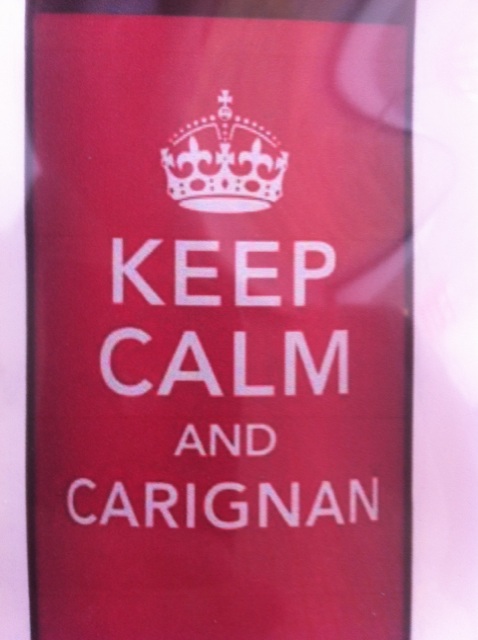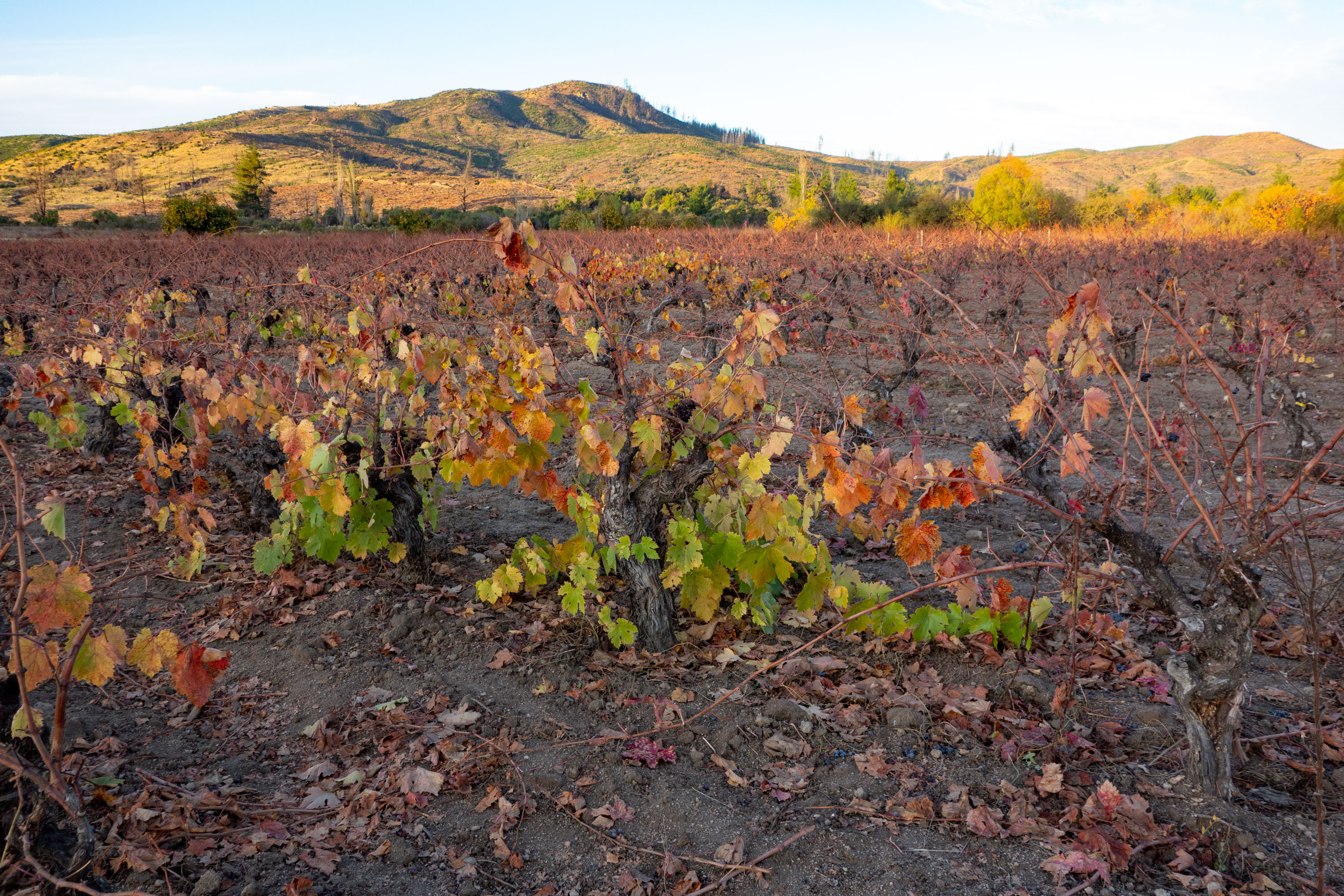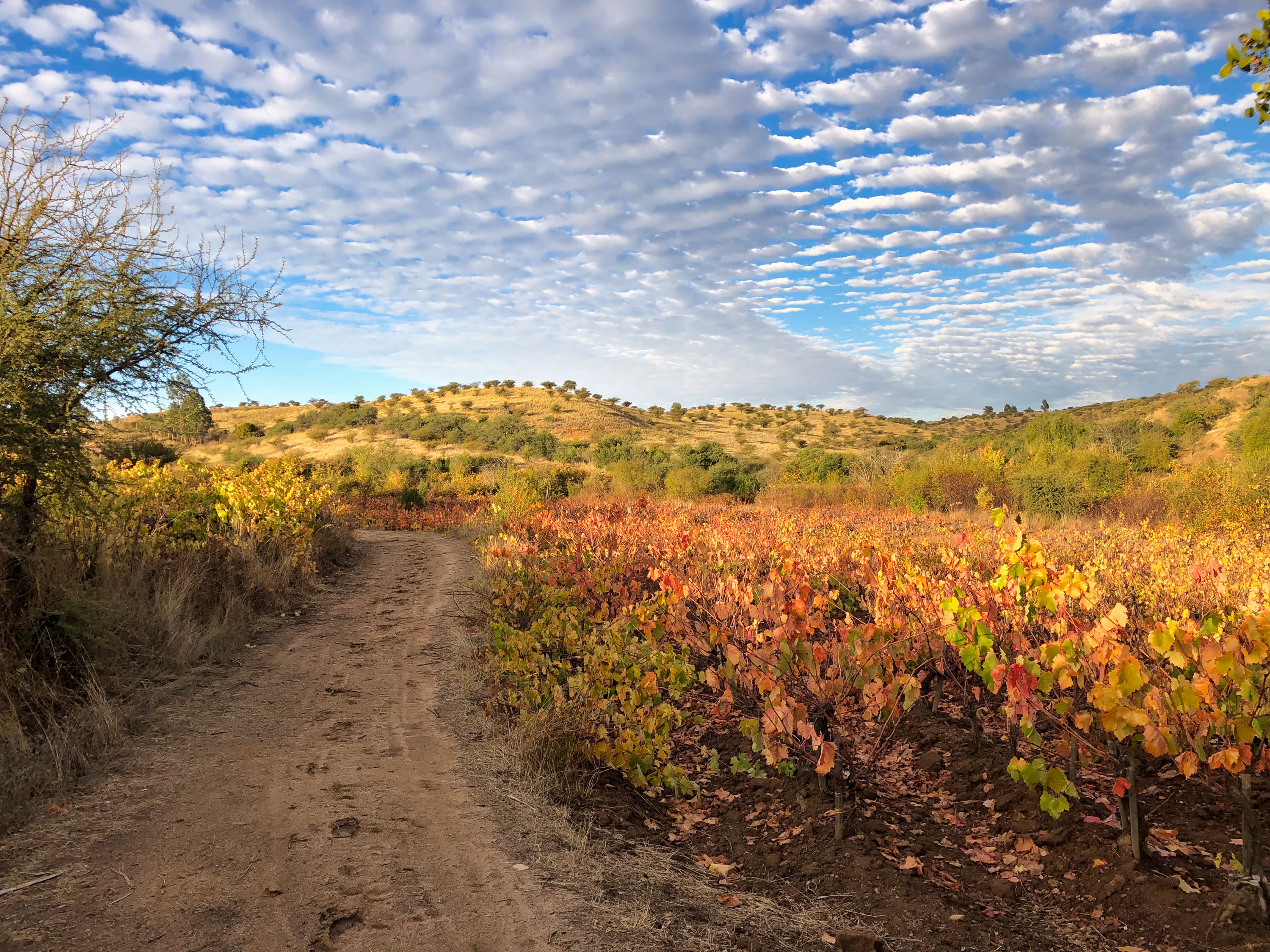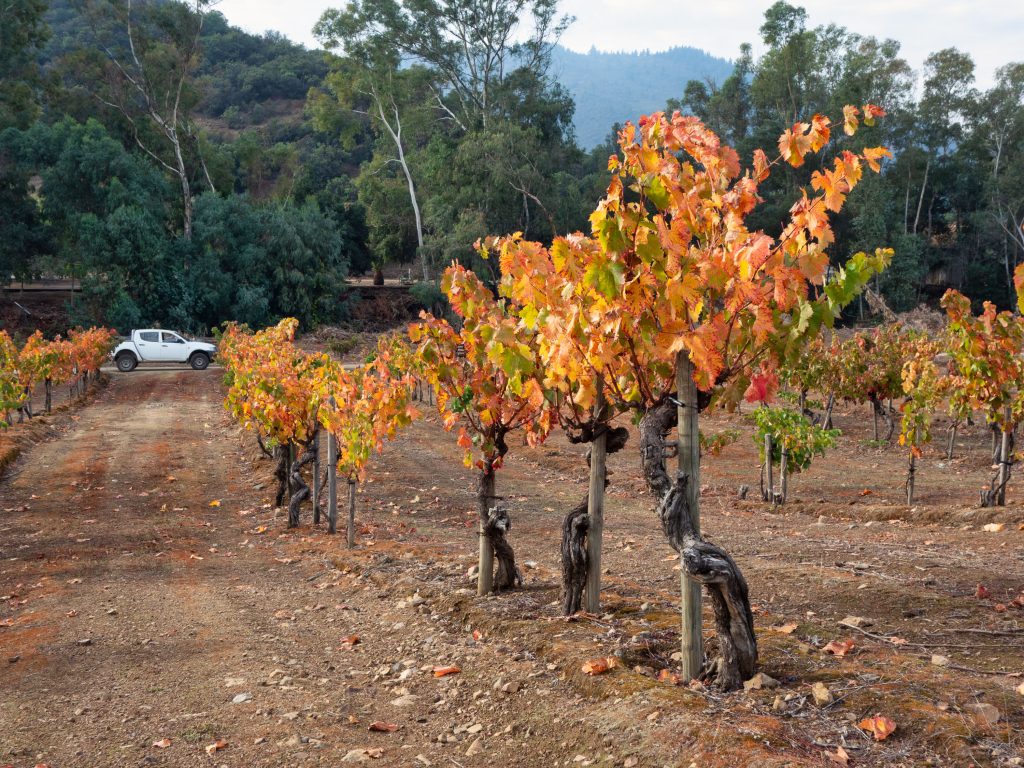In 2011, searching for a way to persuade their own country—and the wider world—that there was more to Chile than inexpensive Sauvignon Blanc and increasingly costly Bordeaux-style blends, a group of winemakers banded together to champion a long-neglected grape uniquely suited to the country’s climate. These winemakers called themselves VIGNO, and they changed the way many people around the world thought about Chilean wine.
In doing so, this group repeated what I’ve come to think of as one of the great success-story paradigms of the modern wine world. That story, in each of its many variations, goes something like this: a large workhorse wine region is planted with interesting, viable grapes that are in high demand, and farmers live happy lives for decades, selling the fruits of their labor to large cooperative wineries and commercial producers for reliably good prices.
But after a while, tastes change, fortunes that were once rising begin to fall, and the previously thriving winegrowing region enters harder times. Yet ripping out vines is expensive, and farmers are stubborn, so many grapes remain in the ground, with growers just barely eking out a living. Over time, the vines grow older.
Then, decades later, (often) young aspiring winemakers searching for inexpensive fruit off the beaten path of the industry’s dominant paradigm discover this treasure trove of old vines. These vines are growing not the expensive, luxury grape varieties fetching the day’s top dollar, but rather somewhat obscure varieties that suit the ambitions of these younger winemakers—who take the grapes, celebrate them, and craft thrilling wines.

It’s a match made in heaven, and the world gains a new, exciting category of wine that helps redefine what a country’s or region’s potential might be.
It happened in the Douro with grapes that used to make Port. It happened in Lodi with old-vine Zinfandel. It happened in South Africa with Chenin Blanc and Cinsault. It happened in Sicily with the wines of Etna. It happened, to some extent, in Tokaj with dry Furmint. And it’s happening right now in several Spanish wine regions from Rioja to Ribeira Sacra.
When it happened in Chile, it happened with Carignan.
VIGNO stands for Vignadores de Carignan and was begun by roughly a dozen winemakers who looked at the vast Maule Valley in south-central Chile and, instead of seeing thousands of acres of old vines nobody wanted, saw enormous potential.
Entirely rural and generally very poor, the Maule Valley had for centuries produced País grapes to quench the thirst of locals and supply the inexpensive table wines made by Chile’s largest producers. In the wake of the devastating 1939 earthquake that wiped out much of the wine industry, the Agriculture Ministry encouraged farmers to plant Carignan—and many did. It quickly became an even more valued blending component than País thanks to its generally lower alcohol and excellent acidity.
But what Carignan provided in the 1950s, tartaric acid now does more cheaply in modern times, and Maule’s Carignan was largely forgotten—left to grow older, wiser, and more complex, waiting for a few enterprising winemakers to see its true worth.
 Old-vine Carignan, Syrah, and Pais in Maule
Old-vine Carignan, Syrah, and Pais in Maule
Ten Years of Calmy Carrying On
I made my first visit to Chile in 2009 and, while I was there, had a chance to taste some of the wines that convinced this small group of winemakers to sign their collective charter. The wines demonstrated enormous potential and stood out from the crowd of Sauvignon Blanc, Carmenère, and Cabernet Sauvignon that most of Chile seemed focused on at the time.
Three years later, I had the opportunity to taste the entire lineup of VIGNO wines in New York and was even further impressed.
And so was the rest of the world—at least outside Chile.
“Internationally, I think [VIGNO] did much more than people thought it would,” says Derek Mossman Knapp, one of the founding members of VIGNO and co-proprietor of the Maule-based Garage Wine Co. “The prices these wines are able to command in the market and the attention from journalists remain high. But within Chile, I don’t think it’s made much of an impact. We thought it would make a bigger difference here, but the domestic market has been a disappointment.”
For Knapp, however, the real value within Chile has been less commercial and more about community.
“In a situation where people are somewhat set in their ways, and looking at the wine industry from a conservative point of view, it’s allowed people to work together and break through that conservative milieu to do something different,” he says.
 An old mixed field blend vineyard in Maule
An old mixed field blend vineyard in Maule
The power of that community over ten years, and its ability to think beyond the bounds of Chilean wine’s historical norms, has resulted in the production of arguably the highest-quality single-varietal Carignan wines in the world.
“Yeah, but what does it really mean to say the world’s best Carignan comes from Chile?” asks Knapp with a laugh. “The French don’t like the grape, the Spanish just fight about what it’s supposed to be called. Nowhere else in the world has Carignan ever become famous.”
If in some ways VIGNO hasn’t been as successful as its founders hoped, Knapp suggests, half-seriously, that part of the problem “is that of all the grapes to choose, we chose Carignan.”
Indeed, apart from the substantial plantings getting a little more attention (usually as part of a blend) in places like Faugères, Fitou, and Corbières in France’s Languedoc, the grape isn’t found in significant quantity anywhere else.
But despite the grape’s obscurity, both the prices VIGNO wines command and the media attention they attract have shifted perceptions of Chilean wine.
More importantly, they’ve improved the lives of the people who farm these old vineyards. The higher prices VIGNO producers pay for grapes have had a meaningful impact on the local economy and raised demand and pricing for Maule’s fruit across the board. People are now paying more for País in Maule in large part thanks to the success of the VIGNO wines and the reputations of Maule-based producers such as Gillmore and Garage Wine Co.
A Grassroots Appellation
One of the most interesting aspects of VIGNO has always been that the organization (officially a chartered non-profit guild) not only brings together winemakers passionate about making Carignan from Maule, but also imposes a set of rules on its members who wish to bottle wines bearing the VIGNO name.
In doing so, the group has effectively created, by consensus, something resembling an Appellation d’Origine Contrôlée. Wines carrying the VIGNO designation must:
Be made from dry-farmed, head-trained or bush vines at least 30 years old in Maule’s Secano region
Contain at least 70% Carignan in varietal composition (and any other varieties must also be dry-farmed and head-trained)
Be aged for a minimum of 24 months in barrel and bottle before release
Additionally, the wines must pass a tasting panel evaluation before being approved to bear the VIGNO designation.
Those requirements leave room for variation among wines, both in varietal composition and winemaking regimen.
The flexibility around varietal composition ensures that those making wines from single old (mixed field blend) vineyards don’t have to worry about the País, Syrah, and Grenache mixed in with the Carignan.
As for winemaking, there was initially quite a bit of variation in VIGNO bottlings. Some of the earliest wines were made in what Chileans might call an “icon wine” style: picked very ripe, aged in 100% new French oak, and bottled in heavy Bordeaux-shaped glass with a high price tag.
Over time, most producers have moved away from this approach in favor of winemaking practices that better showcase both the grape and its place of origin. To a taster like me, this is a wonderful improvement.
The wines VIGNO sent me a few months ago show a far more sophisticated, delicious expression of Maule Carignan than they did ten years ago. They’re simply better—more vibrant, more nuanced, more drinkable.
VIGNO wines have always been worth buying and drinking because of their impact revitalizing Maule and expanding the definition of Chilean fine wine. Now they’re also consistently tasty wines I would genuinely enjoy drinking.
Tasting Notes
Because they are made in small quantities, not all these wines are easily available for purchase (or even price determination) online. I’ve provided pricing and links wherever I could find some availability.

2021 Baron Philippe de Rothschild “VIGNO – Terra Sagrada” Carignan, Maule Valley, Chile
Dark garnet in the glass with ruby highlights, this wine smells of struck match and boysenberries. In the mouth, notes of black cherry, mocha, and boysenberry are wrapped in leathery tannins that stiffen and dry around the palate. This feels like perhaps a touch too much wood influence. 13.5% alcohol. Certified sustainable. Certified vegan. Score: around 8.5. Cost: $??
2019 Bodegas RE “VIGNO” Carignan, Maule Valley, Chile
Medium to dark garnet in color, this wine smells of dried berries and black cherries. In the mouth, dried black cherries and other dried blue and black fruits mix with putty-like tannins that stiffen and dry the mouth. There’s softer acidity here than I would like, leaving the wine feeling a bit heavy and overripe on the palate. 15% alcohol. Score: between 8 and 8.5. Cost: $20
2021 J Bouchon “VIGNO” Carignan, Maule Valley, Chile
Medium to dark garnet in color, this wine smells of dusty earth, wildflowers, and boysenberries. In the mouth, aromatic boysenberry and blueberry flavors are wonderfully floral and boisterous with excellent acidity. Lightly fleecy tannins coat the mouth and stiffen slightly as the wine has a purple SweetTart® note in the finish. Alcohol not specified (temporary label). Score: between 8.5 and 9. Cost: $35.
2021 Casa Patronales “VIGNO” Carignan, Cauquenes Valley, Maule Valley, Chile
Dark garnet in the glass, this wine smells of black cherry and boysenberry with a hint of mocha. In the mouth, black cherry, blood orange, and boysenberry flavors mix with mocha and sweet notes of toasted oak. Lightly fleecy tannins hang in the background, and excellent acidity keeps things bouncy on the palate. There’s a faint herbal bitterness and a touch of alcoholic heat in the finish. 14.5% alcohol. Comes in a nasty, heavy bottle weighing 1.66 kg when full. Score: between 8.5 and 9. Cost: $36
2021 Dagaz “VIGNO” Carignan, Maule Valley, Chile
Dark garnet in the glass, this wine smells of boysenberries, black cherries, and dark chocolate. In the mouth, extremely juicy flavors of black cherry, boysenberry, and cola are mouthwatering thanks to excellent acidity. Lightly fleecy tannins grip the palate and stiffen slightly with time as floral and berry notes linger in the finish. Delicious. 14.5% alcohol. Score: between 9 and 9.5. Cost: $27.

2022 De Martino “VIGNO” Carignan, Maule Valley, Chile
Dark garnet in color, this wine smells of blood orange, struck match, and boysenberries. In the mouth, salty flavors of blood orange, boysenberry, and a hint of cola are juicy and bright thanks to excellent acidity. Fleecy tannins coat the mouth and gradually stiffen as orange peel notes and dried herbs linger in the finish. Fresh and delicious. 14% alcohol. Score: between 9 and 9.5. Cost: $48. click to buy.
2020 Del Pedregal “VIGNO” Carignan, Maule Valley, Chile
Medium to dark garnet in color, this wine smells of boysenberries and black cherries, herbs and flowers. In the mouth, a hint of graphite accompanies bright boysenberry and black cherry flavors mixed with dried herbs. Powdery, chalky tannins coat the mouth, as excellent acidity leaves a citrus peel brightness in the finish. 13% alcohol. Score: between 8.5 and 9. Cost: $??
2020 Garage Wine Co. “VIGNO – Truquilemu Vineyard” Carignan, Empedrado, Maule Valley, Chile
Dark garnet in color, this wine smells of black cherries, dried flowers, and a hint of struck match. In the mouth, juicy boysenberry, black cherry and blood orange flavors have an orange peel brightness and a wonderful, almost-salty juiciness thanks to fantastic acidity. Lightly fleecy tannins coat the mouth, but let the fruit sing. Hints of orange peel and dried herbs linger in the finish with a nice stoniness. 12.8% alcohol. 3371 bottles made. Score: around 9. Cost: $80. click to buy.
2018 Gillmore “VIGNO” Carignan, Maule Valley, Chile
Medium to dark garnet in color, this wine smells of black cherries and boysenberries. In the mouth, juicy boysenberry and blueberry flavors mix with blood orange and dried herbs as excellent acidity makes the mouth water. There’s a road dust and dried herb note lingering in the finish with just a hint of bitterness and the light kick of black pepper. Powdery, fleecy tannins add texture. 14.5% alcohol. Score: around 9. Cost: $35. click to buy.
2021 Lapostolle “VIGNO” Carignan, Maule Valley, Chile
Medium to dark garnet in the glass, this wine smells of blood orange and boysenberries. In the mouth, very refined and elegant tannins hang back and let blood orange and boysenberry flavors mix with a hint of dried herbs on the palate. Excellent acidity, and a nice stoniness here that is compelling. 13.5% alcohol. Score: around 9. Cost: $53.
2021 Miguel Torres “VIGNO – Parcela Huerta Maule” Carignan, Maule Valley, Chile
Dark garnet in color with purple highlights, this wine smells of black cherries and mulberries with a hint of struck flint. In the mouth, there’s a faint struck match quality to the wine, and a little accompanying salinity as flavors of black cherries, huckleberries, and cola mix with a touch of dried herbs. Excellent acidity, with light fleecy tannins. 14% alcohol. Score: around 9. Cost: $23. click to buy.

2021 Morandé “VIGNO” Carignan, Maule Valley, Chile
Medium to dark garnet in the glass, this wine smells of blood orange, chopped resinous herbs, and boysenberries. In the mouth, faintly saline flavors of blood orange, boysenberry and black cherry are bright and juicy with excellent acidity. Faint fleecy tannins hang back and let the boisterous fruit do the talking. Hints of dried herbs and dried orange peel linger in the finish. Tasty. 14% alcohol. Score: around 9. Cost: $26. click to buy.
2020 Odfjell “VIGNO” Carignan, Maule Valley, Chile
Medium to dark garnet in color, this wine smells of blood orange, boysenberry, and plum. In the mouth, juicy plum and blood orange flavors are laced with orange peel, dried herbs, and road dust. Fleecy tannins stiffen with time gripping the palate firmly, but remaining supple. Excellent acidity and balance. 14.5% alcohol. Certified organic. Certified vegan. Score: between 9 and 9.5. Cost: $??
2020 Valdivieso “VIGNO” Carignan, Maule Valley, Chile
Dark garnet in the glass with purple highights, this wine smells of black cherries, dried herbs, and earth. In the mouth, bright boysenberry and black cherry flavors mix with a touch of cola as fleecy tannins coat the mouth and grip the palate. Excellent acidity leaves road dust, dried herbs, and scents of wildflowers in the finish. 13.5% alcohol. Score: between 8.5 and 9. Cost: $27.
2021 Undurraga “VIGNO” Carignan, Maule Valley, Chile
Dark garnet-purple in the glass, this wine smells of black cherries, and black plum. In the mouth, black cherry and plum flavors have a plum-skin and citrus peel brightness thanks to fantastic acidity. Fleecy tannins coat the mouth and gradually squeeze the palate. Notes of dried herbs and flowers linger in the finish. 14.5% alcohol. Score: around 9. Cost: $40. click to buy.

